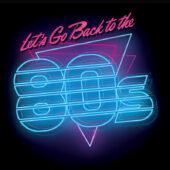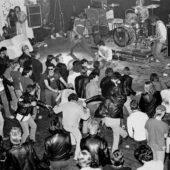Honoring the Oak Ridge Boys’ Joe Bonsall and the Group’s Crucial Role in Country
The oak is a symbol of strength.
So when Oak Ridge Boy Joe Bonsall, 76, died July 9 of amyotrophic lateral sclerosis, formerly known as Lou Gehrig’s disease, it came as a shock to many. He was the most active Oak onstage during the bulk of a sturdy, 50-year membership in the group, installed in the Country Music Hall of Fame, the Gospel Music Hall of Fame and the Grand Ole Opry.
Bonsall was a dedicated runner into his 50s and, after that, routinely walked five miles when the bus reached a concert destination, insistent on maintaining his fitness in a touring lifestyle that makes that difficult. He determinedly worked on his farm in Middle Tennessee until recent years, when battles with blood clots and later ALS damaged his physical capabilities.
“A lot of those ships have sailed,” he told Billboard Country Update in a 2023 interview while celebrating the 50th anniversary of The Oaks’ most successful lineup, and contemplating how the group’s future might unfold.
The Oaks’ history is one of innovation, though many current country artists and executives may not fully grasp the impact that the quartet — including Duane Allen, Richard Sterban and William Lee Golden — had on the genre. In October 1973, Bonsall was the last of that lineup to join the group, which was originally known as The Georgia Clodhoppers and, later, The Oak Ridge Quartet, following its 1945 formation.
Trending on Billboard
The Oaks experienced several conversions in the decade after Bonsall’s arrival. They moved into country music in the mid-1970s, Bonsall’s tenor soaring over the ensemble as he took command of the closing choruses on the group’s first country hit, “Y’all Come Back Saloon,” in 1977. In 1981, the act evolved further, becoming a leading ambassador for the format during one of its biggest crossover eras with the novelty “Elvira” hitting No. 5 on the Billboard Hot 100 and high-energy “Bobbie Sue” rising to No. 12. Bonsall’s voice imbued both those singles with a cutting quality, though he was also quite capable of more thoughtful performances, including the tender “I Guess It Never Hurts To Hurt Sometimes,” a lullaby to a late father.
Not that Bonsall was the lone Oak voice. Each of the members took the lead on different releases during their career, amassing 17 No. 1s among 34 top 10 country singles. Teamwork among four voices of distinction was a hallmark of the act.
“That’s been one of the secrets to our success,” Bonsall said. “All four guys can actually sing, and we feature them all on different leads, so the show was not boring.”
The Oaks’ approach to concerts was particularly groundbreaking. A few rock acts, such as KISS and Alice Cooper, employed elaborate staging in the late 1970s, though video screens were not yet invented and multicolor lighting was crude and somewhat random. Most country artists were content to stand behind a microphone and re-create their hits. The Oaks, led by Bonsall’s high-energy personality, were more freewheeling onstage, and they were much more aggressive in securing advanced lighting systems and paying spotlight operators who could hone in on specific locations from near the front of the stage instead of back-of-house light directors with wider, more diffuse effect.
“Even in the gray days, when the Oaks went onstage, we invested,” Bonsall remembered. “I think we borrowed money to buy a huge logo of the Oak Ridge Boys [for a] lighted sign that came down behind us, no matter where we were playing. We were already ahead of it, production-wise.”
The Philadelphia-born Bonsall immersed himself in vocal harmony at a young age, playing with various local groups until he landed in The Keystones, a gospel act that included Sterban, a bass singer who was born in nearby Camden, N.J. In addition to performing, Bonsall promoted concerts in the area, and when he booked The Oaks, he hit it off with both Allen and Golden, who had joined the group in the mid-1960s. The Keystones soon signed with a gospel label, and Allen produced a string of albums for the group. When Sterban left The Keystones to join Elvis Presley’s tour in 1972 as a member of J.D. Sumner & The Stamps Quartet, Bonsall was unable to find a suitable bass vocalist. Instead, he made The Keystones more of a rock-edged ensemble.
After Bonsall joined The Oaks in 1973, that forward-thinking mentality fit their approach as they became a significant country act. Their instrumentation and presentation made them competitive with pop and rock artists on the arena circuit in the ’80s.
“We made sure that we went out there with smoke and lasers and a big set,” Bonsall recalled. “When we’d do ‘Dancing the Night Away,’ man, I could run around on my own ramp. I mean, it was so cool. We had a big production. I don’t know how it compares to the kids today — probably not as much. But for those days, it was big-time production.”
As The Oaks made the inevitable shift from country newcomers to A-list headliners to veteran status, Bonsall expanded into new outlets, writing 11 books and periodically playing banjo with other artists. The group determinedly continued its road-dog lifestyle.
“We don’t even know how to slow down,” said Bonsall last year. “I guess we feel as Christian men that God will tell us. God has guided our career, he’s guided our personal lives and our families. We’ve been very, very blessed. I think God will tell us when it’s time, and he may be whispering in my ear.”
Indeed, Bonsall played his last concert with The Oaks on Dec. 17, announcing his retirement from touring in January. It was a difficult decision — he was completely committed to being one of the mighty Oaks. He recalled a typical encounter at a grocery store:
“Some guy says, ‘Aren’t you one of the…’ ‘Yep, that’s my middle name: of the.’ Our middle names are all ‘of the.’ ”
Bonsall, of the Oak Ridge Boys, chose not to have a funeral. In lieu of flowers, donations can be made to The ALS Association or Vanderbilt Medical Center ALS and Neuroscience Research Center.


















